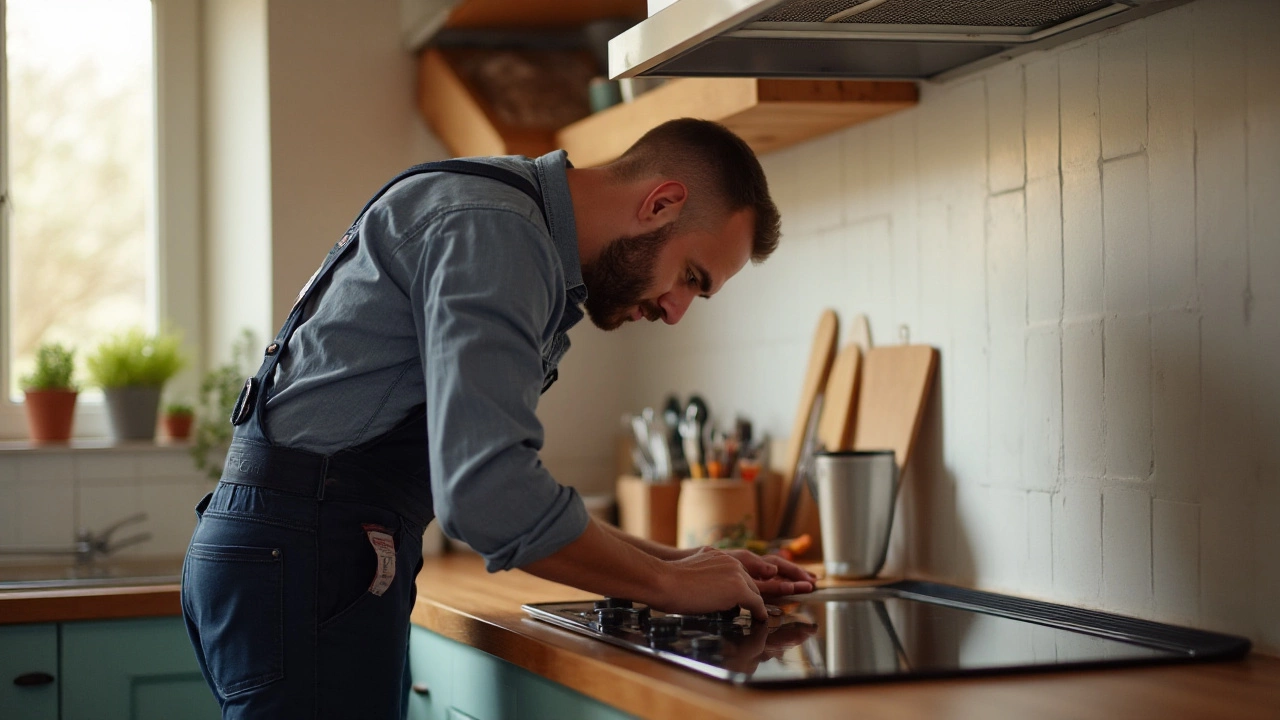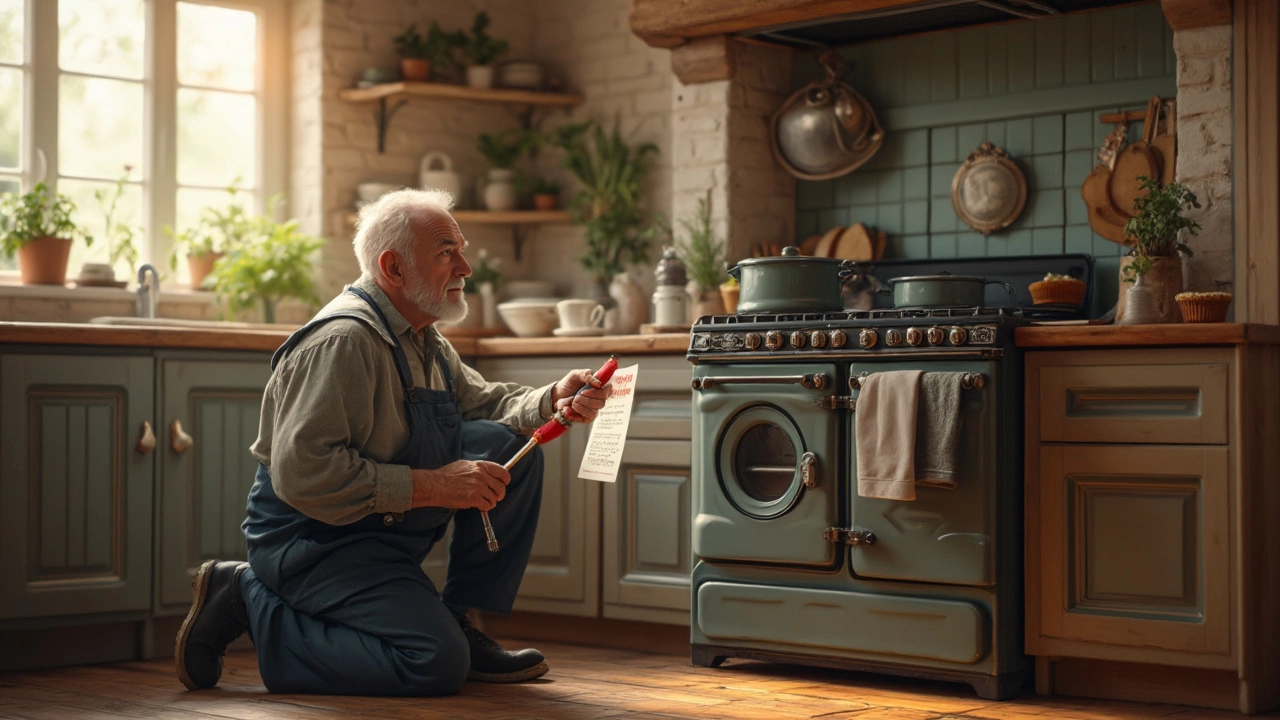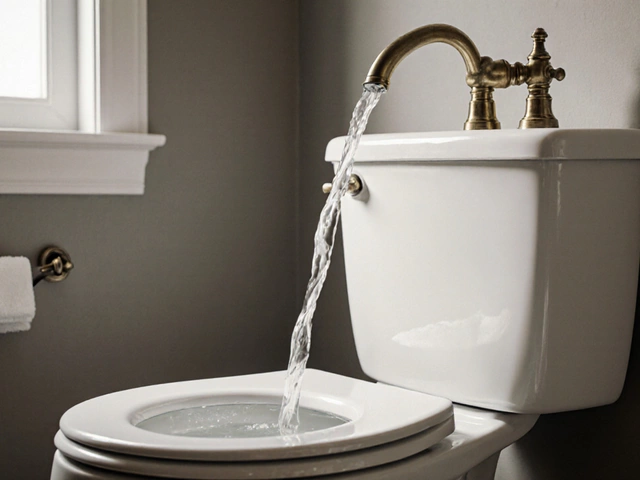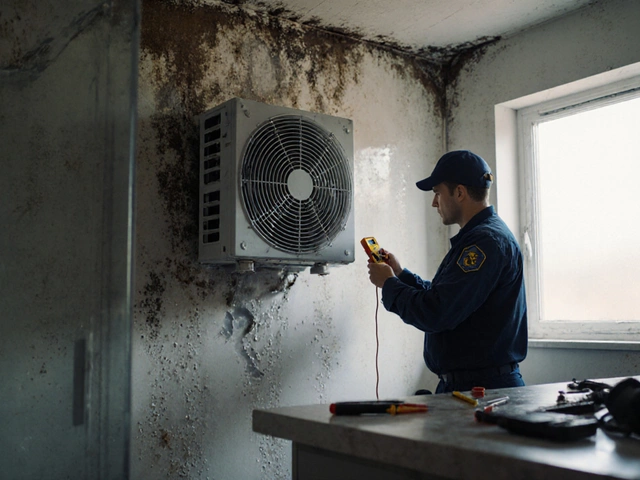Electric hobs are integral to modern kitchens, providing sleek and efficient cooking solutions. However, like all appliances, they can encounter problems that require attention. Understanding what goes into the cost of repairing an electric hob can help you make informed decisions about how to handle any issues that arise.
From simple fixes like replacing a faulty burner to more complex repairs such as addressing electronic control malfunctions, knowing the potential costs and steps involved is crucial. In this article, we'll explore common electric hob issues, what influences repair costs, and when it might be time to call in a pro. Additionally, we'll provide tips on maintaining your hob to prevent problems before they start, keeping your kitchen running smoothly and your expenses in check.
- Common Issues with Electric Hobs
- Factors Influencing Repair Costs
- DIY Troubleshooting Tips
- When to Call a Professional
- Maintenance Tips to Prevent Future Issues
Common Issues with Electric Hobs
Electric hobs, while convenient and efficient, can experience a variety of common issues that might disrupt your cooking plans. One of the most frequent problems is a faulty burner. Often, a burner may not heat up as expected, or it could overheat and switch off. This kind of issue can be caused by a broken or worn-out heating element or a malfunctioning connection inside the hob. It might be a good idea to visually inspect the element for any visible damage or signs of wear as an initial troubleshooting step.
Another prevalent issue involves the control knobs. These might become loose over time or stop working altogether. The knobs are directly connected to the internal mechanisms that adjust the level of heat, so any disruption here can affect how you cook. In some cases, it is a simple fix that involves tightening or replacing the knob, but occasionally, the underlying issue could be a problem with the electronic control board. "It’s essential to address control malfunctions promptly," suggests household repair specialist Eliza Cole.
"Ignoring small issues like sticky knobs can lead to bigger, more costly repairs down the line."
A less common, but still significant problem, is the failure of the electric hob’s circuitry. This can arise from power surges or aging components and may lead to the hob not turning on at all. In such scenarios, checking your home’s circuit breaker for any tripped switches can often be the first step. More intricate issues may require the expertise of a professional to delve into the appliance’s internal wiring and connections.
Moreover, issues with the temperature settings are troublesome for many users. If the heat levels seem inconsistent, it could be a sign of a malfunctioning thermostat. This issue can prevent the hob from maintaining the desired temperature, which can be quite frustrating during meal preparations. Thermal sensors might also degrade over time, needing replacement to restore proper function.
Finally, the glass top that is common in many electric hobs can occasionally crack or shatter if something heavy is dropped on it, or even from rapid temperature changes. Though the hob often continues to work, using it in this condition is unsafe. It's worth noting that repair costs for glass tops can vary significantly depending on the model.
Factors Influencing Repair Costs
When it comes to electric hob repair, the costs can be as unpredictable as the issues that cause them. Several variables come into play when determining how much you'll end up paying to get your cooking hub back in working order. Understanding these factors can better prepare you for a successful repair experience and help in budgeting appropriately.
One of the primary factors affecting the repair cost of an electric hob is the nature of the issue. A minor repair, such as replacing a single heating element or a simple fuse can be relatively inexpensive. Conversely, problems involving the circuit board or electronic control units often require more time and specialized expertise, leading to higher labor costs. Parts also contribute significantly to the overall cost, particularly if you're dealing with a premium or obsolete model where parts are scarce or uniquely expensive. As the technological complexity of your hob increases, so too does the potential cost of repair.
Labor charges vary greatly depending on your geographical location and the availability of skilled technicians. In urban areas, the market demand for appliance repair can result in higher labor costs compared to more rural regions. Additionally, some brands are known to require specialized service providers, potentially adding to the cost due to the need for specific expertise or certifications. Consider the brand of your electric hob; some manufacturers offer warranty or repair programs which can reduce or eliminate repair expenses, though these are often contingent on the age and user maintenance history of the appliance.
A less obvious yet crucial factor that can influence cost is the timeliness of your approach to repairs. Addressing issues promptly can keep costs low by preventing more extensive damage from developing. For instance, ignoring a single flickering burner might lead to broader electronic failures, escalating the scope and cost of a subsequent repair. The advice of Chef John Halter, a respected figure in culinary equipment maintenance, hits the mark:
"Timely intervention and routine maintenance are the keys to keeping repair bills manageable. Like all relationships, you have to work at it to keep it functioning well."
Finally, alternative options such as DIY repairs may seem enticing to save on professional labor costs, yet these pose their own risks. Without adequate technical knowledge and tools, attempts to fix complex electric components might lead to greater damage or even safety hazards. Therefore, weighing the potential savings against the risk of exacerbating the problem is crucial when deciding whether to tackle a repair on your own. In many cases, investing in a skilled technician can prove cost-effective in the long run, ensuring reliable and safe repairs that restore your hob to full functionality.
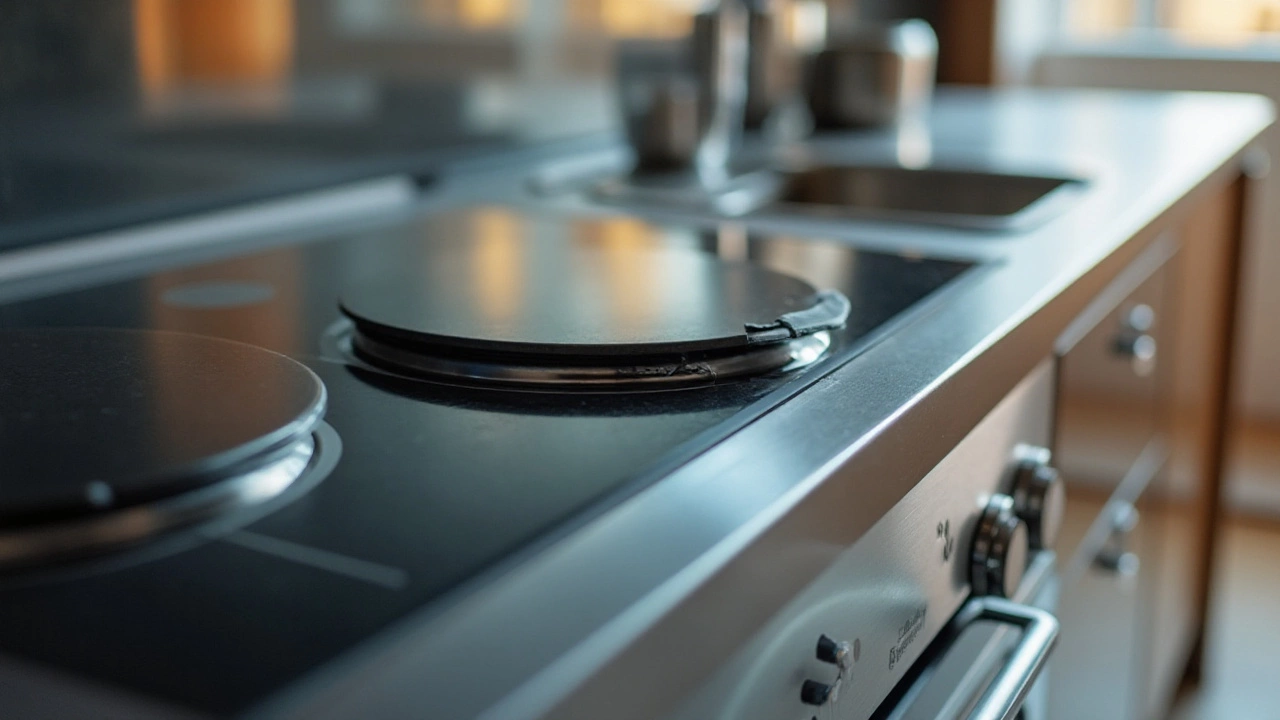
DIY Troubleshooting Tips
For those who enjoy the satisfaction of fixing things themselves, tackling minor issues with your electric hob can be a rewarding experience. Before diving in, it's important to understand the basics of your appliance. Most electric hobs function thanks to a simple mechanism involving electrical currents that heat coils under your cooktop's surface. Troubles can arise from something as mundane as a dirty burner to more intricate problems like a faulty control switch. Each issue may have its own set of indicators and solutions.
One common issue might be an element not heating up. Before assuming the worst, check if the element is properly seated in its socket. Wiggling it a bit might solve your problem. If not, there could be an issue with the wiring or element itself. Using a multimeter, test the element for continuity. It should show near zero resistance if functional. Replacing an element, fortunately, isn't typically a costly affair, with average costs for new parts being lightweight on the pocket.
Checking Connections and Controls
Faulty connections can be equally frustrating. If your entire hob is acting up, particularly if it's digital, it might be a control board issue. To assess this, after ensuring safety by unplugging or switching off the power, carefully remove the control panel. Electronic components should be inspected for any signs of burns or damage. Sometimes just ensuring that all connectors are tightly secured can rectify erratic behavior. This precautionary approach might save both time and money when it comes to hob repair.
"It's often the simplest solutions that elude us amidst the whirlpool of more complex diagnostics," says appliance expert John Macy. "Start small, work your way up."
In some instances, hobs with touch control panels might suddenly become unresponsive. This can sometimes be remedied by resetting the unit. For many models, this simply involves disconnecting the power for a short time. However, if the issue persists, it might require recalibration. Refer to your manufacturer's manual on how to perform this step to ensure your actions align with their system requirements.
Identifying System Faults
There are other symptoms that might indicate a need for intervention, such as unusual noises or uneven cooking. These could point to systemic issues like a failing fan or ventilation obstruction. To investigate, make sure any vents are clear of debris. A simple cleaning can sometimes refresh performance remarkably. If you suspect mechanical failures, disassembling requires caution. Always refer to your specific hob model manual for diagrams and guides on safe disassembly.
Replacing Faulty Burners
If you find yourself contemplating hob repair cost in the context of replacing burners or coils, costs will vary based on your appliance's make and model. Ordering genuine parts is recommended to maintain the hob's performance integrity. Comparing prices online and checking installation instructions can aid in replacing these without professional help. This DIY approach not only saves some dollars but also empowers you with practical skills and the comfort of a fully functional kitchen appliance.
When to Call a Professional
Dealing with an electric hob repair is sometimes as simple as replacing a burnt-out burner or tweaking a knob. But not every problem that arises in your kitchen can be solved with a do-it-yourself approach. Knowing when to call in an expert can save you time, frustration, and potentially dangerous outcomes. While fixing minor issues might be within an adventurous cook's repertoire, certain situations demand a skilled hand.
For instance, if your hob is not heating evenly or seems unresponsive, it might signal deeper electrical problems. A persistent issue might stem from a faulty control unit or internal circuitry - problems that require specialized tools and expertise to diagnose and fix. Attempting to address such issues without the proper understanding can lead to further complications, even electrical hazards, which is why professional intervention becomes necessary.
Engaging a professional ensures that not only the apparent problem is addressed, but potentially hidden issues are identified and resolved too. Electrical appliances like hobs rely on complex electrical systems, meaning a simple mistake could lead to circuits being damaged or worse, a fire hazard being created. A qualified technician can assess these situations safely and efficiently.
Costs incurred when consulting professionals vary. Generally, they include diagnostic fees, parts, and labor charges. On average, New Zealand residents might expect anywhere from NZD 100 to 300 for routine jobs. While this may seem steep, it often includes warranties or guarantees of service, offering peace of mind that DIY fixes cannot match. When considering the cost of expertise, remember to weigh it against the potential increased cost of fixing later complications that might arise from an unskilled repair attempt.
Dan Cookson, a renowned expert in appliance repair, once shared,
"It's not just about the immediate fix. It's about ensuring the lifespan and safety of your appliances in the long run."
His words emphasize the importance of professional repair services, particularly when dealing with appliances as critical as an electric hob. Rather than viewing professional servicing as a last resort, think of it as a preventative measure that safeguards the longevity of your kitchen's functionality.
Next time your electric hob starts showing signs of distress, assess the situation. It's perfectly fine to tackle simple issues on your own, but recognizing the tipping point, when expertise truly matters, can be the difference between a small expense now and a large one down the road. Don't hesitate to reach out to trusted appliance repair professionals when that moment arises.

Maintenance Tips to Prevent Future Issues
Keeping your electric hob in top-notch condition doesn't just save you money on repairs; it also extends the lifespan of your appliance and ensures its reliability in your daily cooking endeavors. Regular maintenance can prevent minor inconveniences from escalating into major repair costs and help you avoid the frustration of a non-functional stove just when you need it most. Start by cleaning your hob after every use. It's surprising how quickly food particles and spills can harden, potentially causing future ignition or heating issues if left unattended. Gently remove burnt-on grime with a soft cloth and suitable hob cleaner. This simple daily habit minimizes the risk of debris-induced malfunctions and keeps your cooking surface smooth and ready for use.
Another vital aspect of maintenance is checking the hob's electrical components. Ensure the power supply connections are secure, and periodically inspect the plugs and cords for wear and tear. A loose wire or damaged plug can lead to hazardous situations or hinder the hob's performance. If you spot any signs of damage, it's crucial to replace them immediately. This proactive approach can prevent small electrical problems from developing into significant issues.
Only use cookware that matches the size and material suitable for your hob. Not only does this ensure even cooking, but it also prevents excessive strain on the heating elements which can lead to premature wearing out. Using the right pot or pan also prevents scratching on the glass or ceramic surface, which, if severe, might necessitate an expensive repair or replacement.
"Good kitchen maintenance is a silent art that saves hours of unnecessary work," a wise chef once said, emphasizing the unseen effort behind a smoothly running kitchen.
Regularly inspect and give attention to the hob's controls. Rotating or pressing lightly on them can keep them from becoming stiff or sticky over time. This also includes digitized interfaces which should be checked for responsiveness. Keeping the controls functioning smoothly ensures your settings remain accurate and prevents unnecessary wear.
Appliance repair professionals often suggest creating a simple maintenance schedule to keep track of what cleaning or checks need to be done and when. This schedule can be tailored to your specific hob model, ensuring you don't miss critical care areas. This not only keeps your equipment functioning optimally but also helps avoid sudden and unexpected repair costs. Implementing these simple maintenance habits prevents future issues, saving not just money but also giving you peace of mind.
